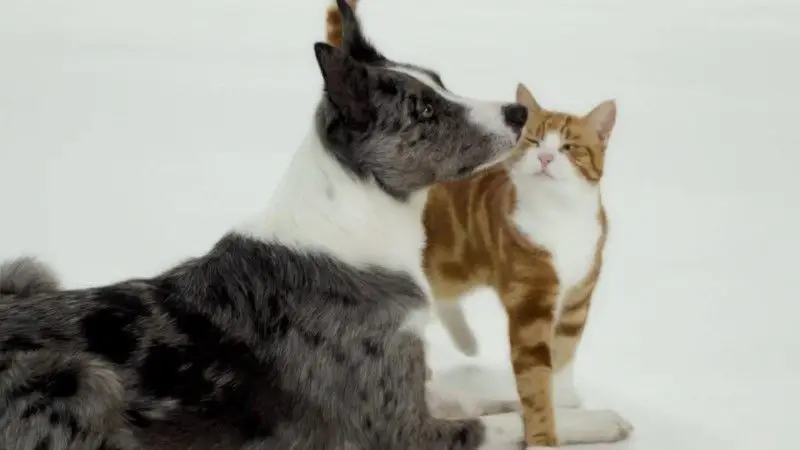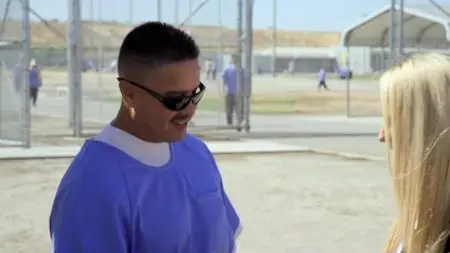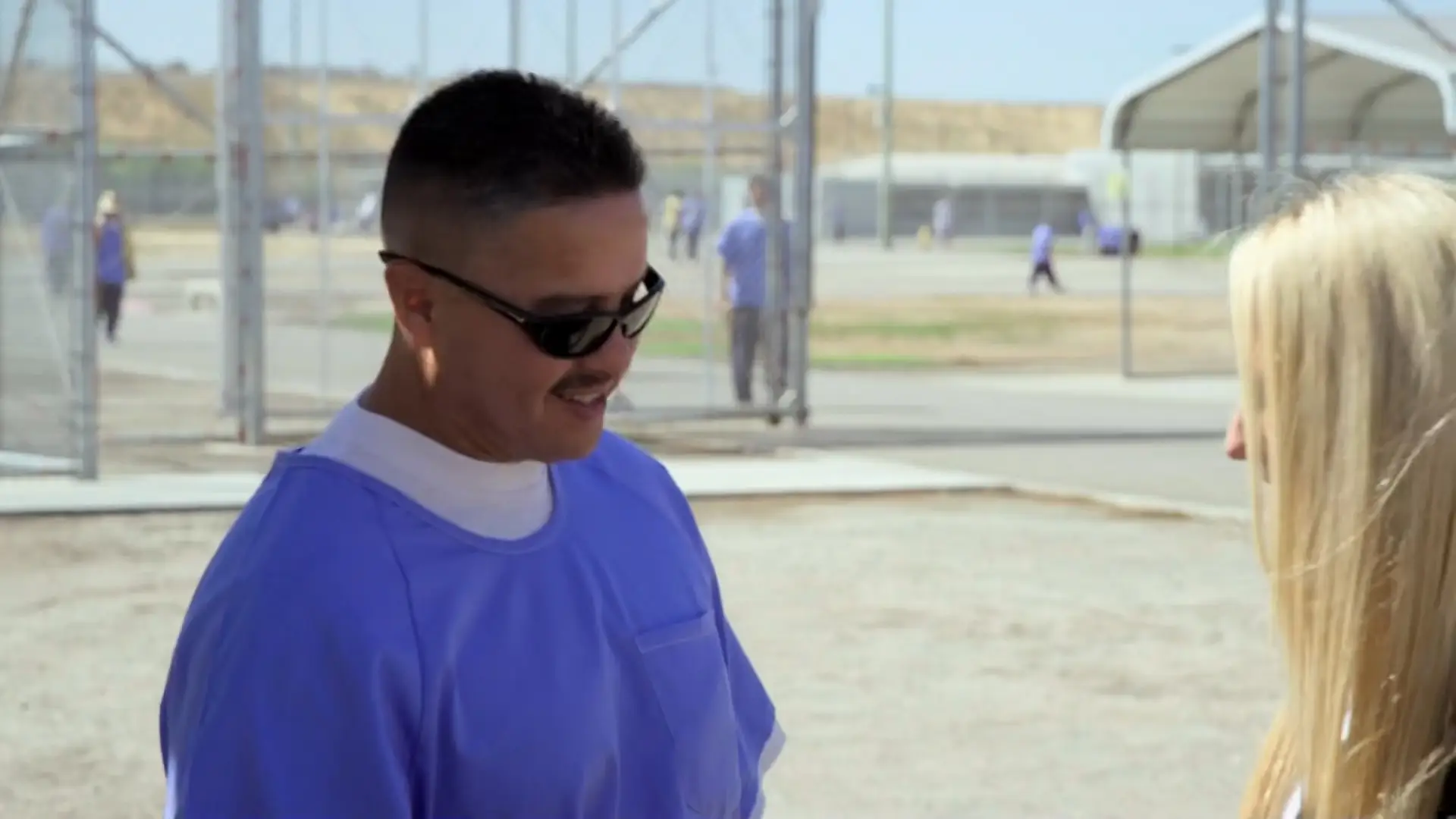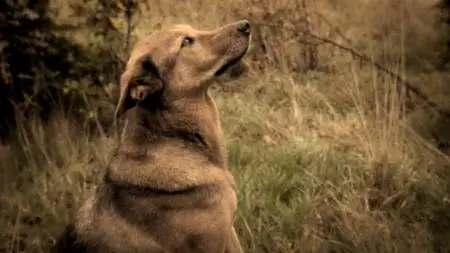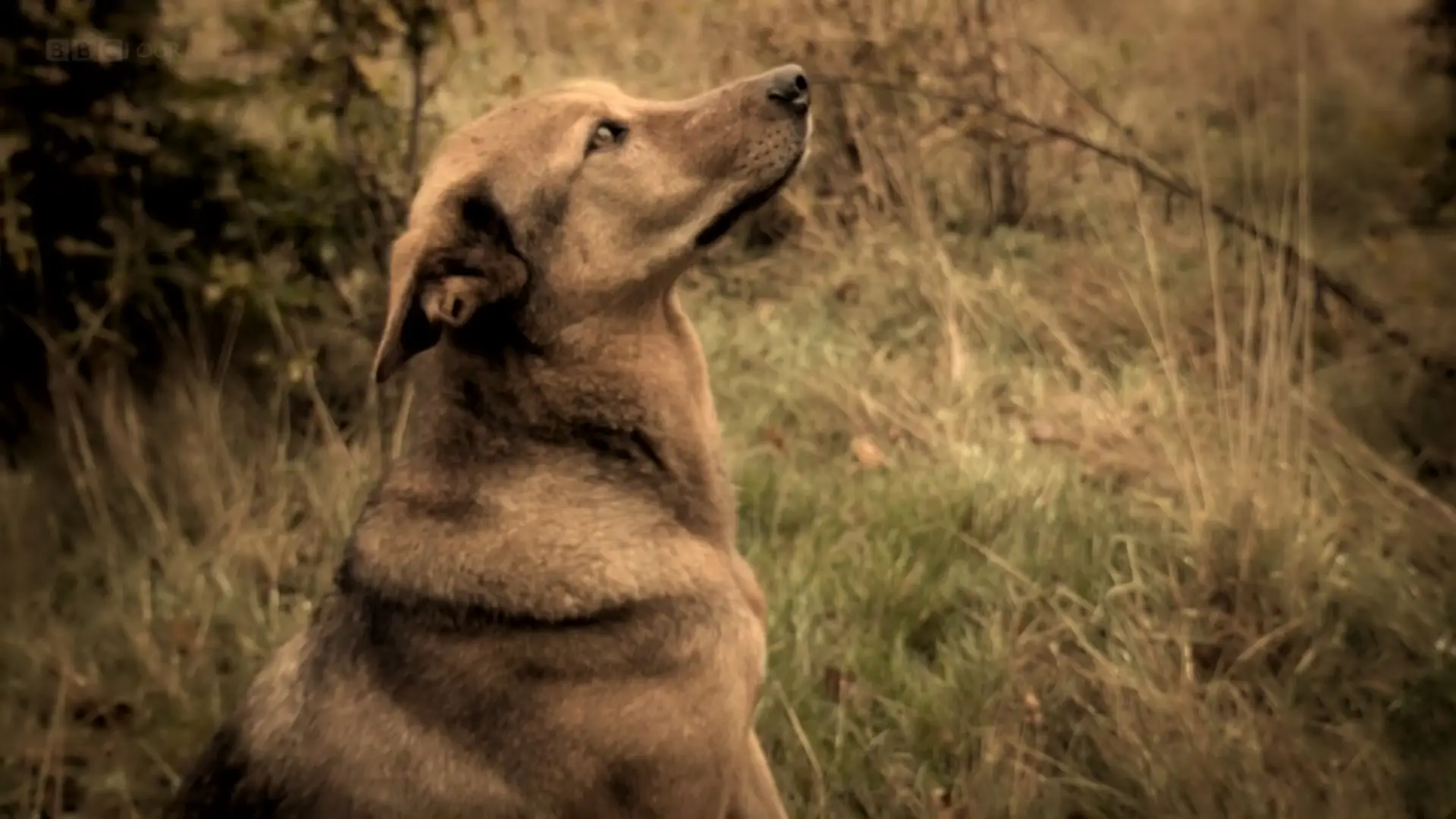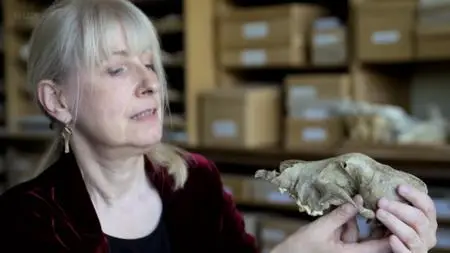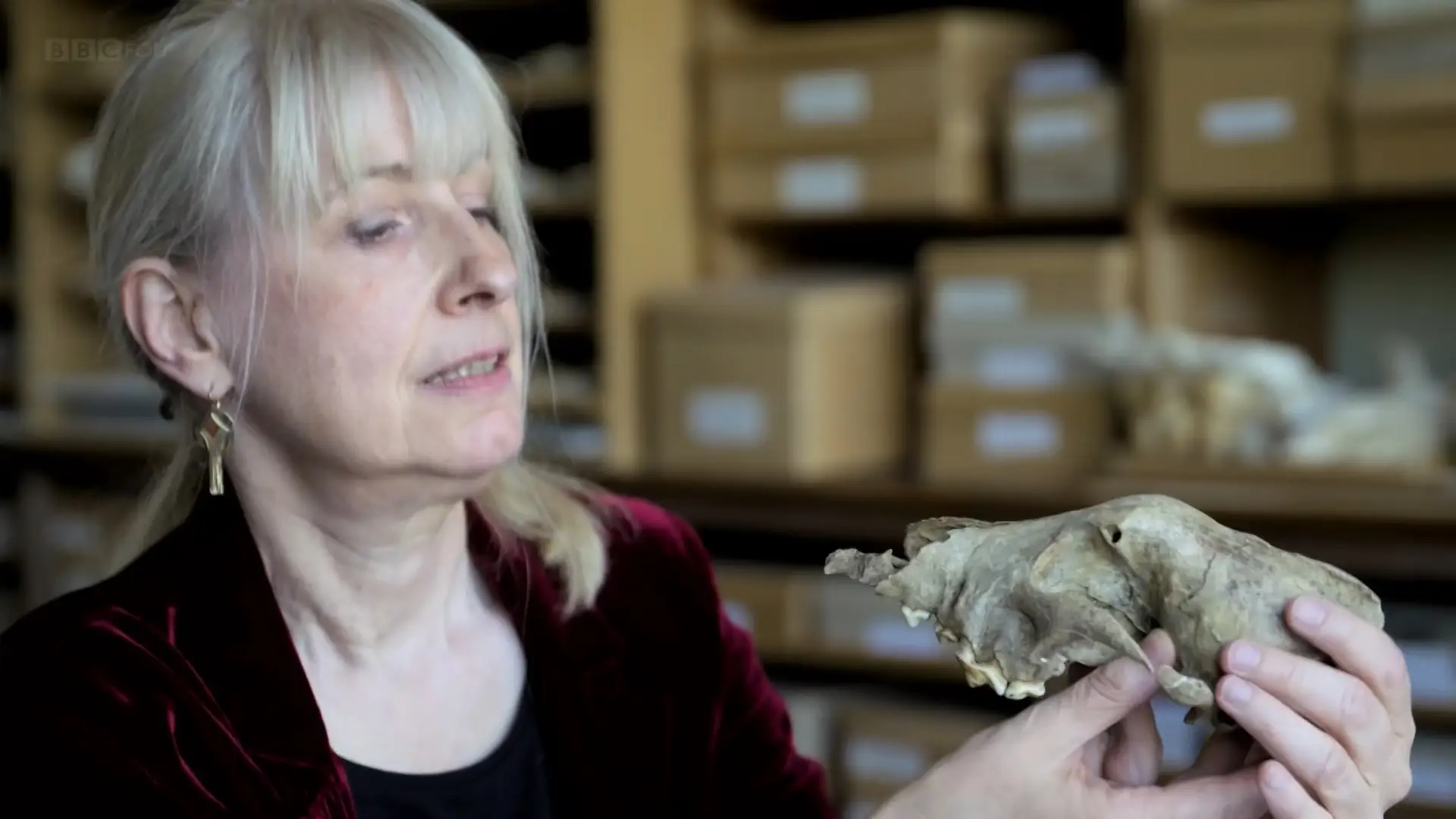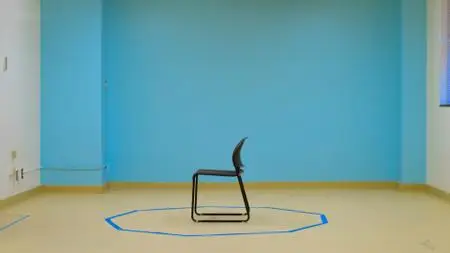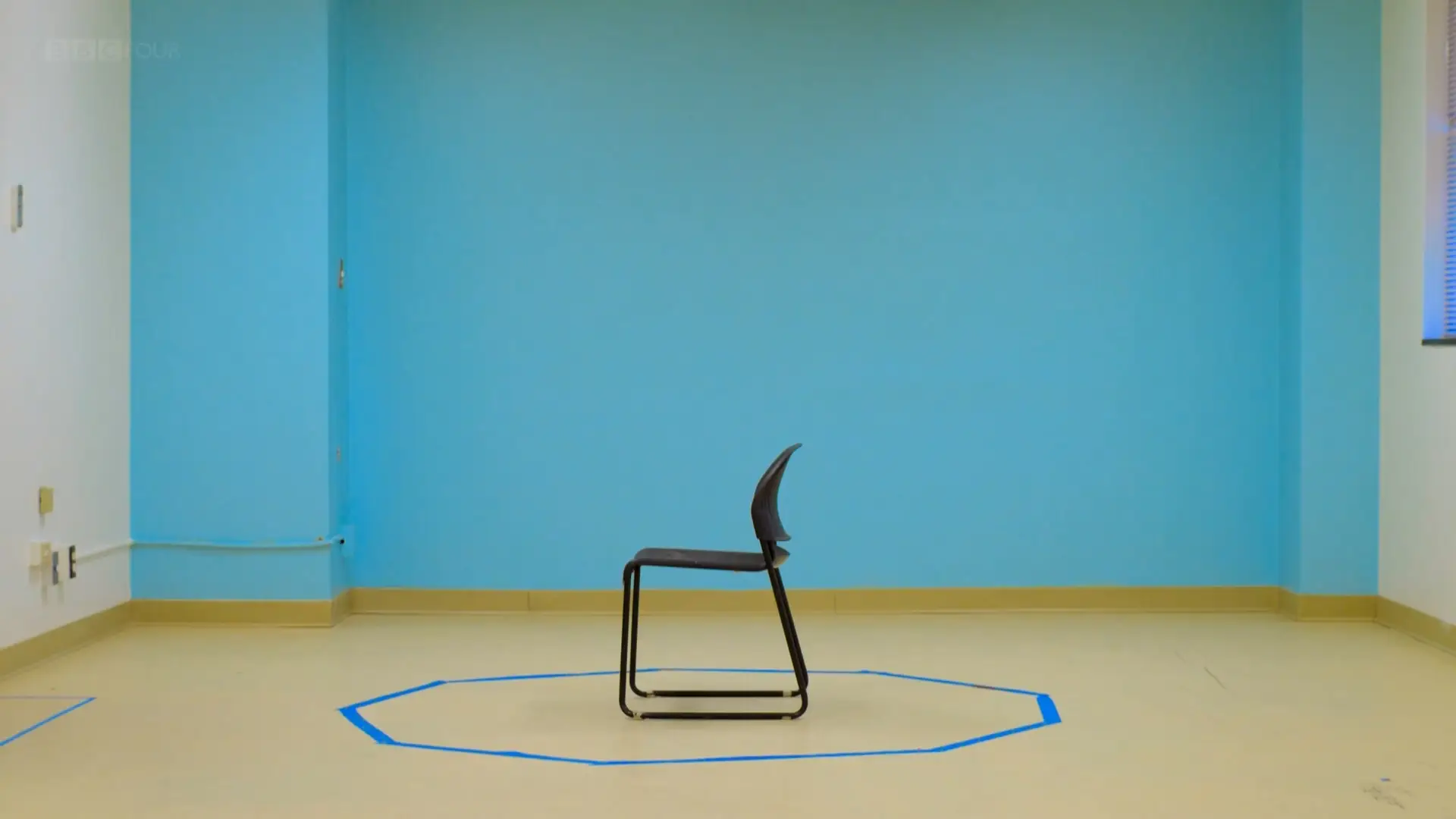BBC - How We Tamed the Cat and Dog (2020)
HDTV | 1920x1080 | .MKV/AVC @ 2701 Kbps | 2x~58min | 2.13 GiB
Audio: English AAC 129 kbps, 2 channels | Subs: English
Genre: Documentary
The latest archaeology and genetics answer the biggest questions about cats and dogs. Where did they come from? How did they end up living with us? Why do we love them?
Part 1: Dog Tales: The Making of Man's Best Friend
Dogs have been at our side longer than any other animal in history. They have made us better hunters and better farmers, saved our lives and protected us from harm. And even though dogs may come in all shapes and sizes, they all have one thing in common – they seem to love us. If you were designing the perfect companion for humans, you'd probably end up with something like a dog.
So, how did we get so lucky?
We unravel the scientific secrets that explain what makes a dog… a dog. We reveal that the emotional bond between human and dog is so profound, it is helping transform the lives of hardened criminals in the US prison system convicted of the most violent crimes.
We examine a 30,000-year-old Belgian wolf skull that some believe marks the first transition from wolf to dog. Many scientists suspect that it is the arrival of us, modern humans, that transformed grey wolves into dogs.
We visit a fox farm in Siberia where a unique selective breeding experiment has been going on for 60 years. This programme helps to explain how the presence of humans transformed the biology, behaviour and appearance of wolves. Some scientists suspect that wolves may have even initiated this process themselves through self-selection.
We go to a dog show to explore the huge variety of shapes and sizes we see in modern dogs and reveal that dogs share a unique ability to vary shape and size by altering just a handful of genes. The Dog Genome Project is discovering that what drove most of this variety was intensive human selection for extreme genes.
We also explore experiments with wolves and dogs at the Wolf Science Centre in Austria, which reveal that the common assumption that our bond with dogs results from selection for intelligence is simply wrong. In fact, recent scientific studies suggest that what makes dogs seem intelligent to us is their unique emotional make-up. It turns out that the secret of our bond with dogs may be love. Not our love for them, but their love for us. MRI scanning of dogs' brains in Atlanta, Georgia, seems to confirm that dogs genuinely love us.
We visit Callie Truelove, a young girl living with the rare genetic condition Williams Syndrome. This makes Callie extremely loving and sociable. But geneticists have discovered that the same mutations that give Callie her super social nature have also been found in dogs. Some scientists suspect that this is the true secret behind what makes the dog humanity's best friend.
Part 2: Cat Tales: In from the Wild
We take a close-up look at the world's most popular furry pet, the cat. Detailed real-time brain scans reveal a possible explanation for why owners are besotted with their cats. A cat's meow plugs straight into the emotional centres of our brains in exactly the same way as a baby's cry. And adult cats only meow to humans. So they may not intend to manipulate us, but they do. It turns out owners literally can't help loving their cats.
Can we tell what a cat is thinking and feeling? In a way, we can. Dr Lauren Finka has been studying cats' enigmatic faces to try and read their thoughts and emotions. ‘Whilst cats definitely change their expressions, it's very, very subtle. For the average cat owner trying to look at the cat's face, it remains problematic.' So, unless you're a scientist, cats remain hard to read.
By contrast, according to new research, it turns out that cats can read our emotions like a book.
We discover that the gap between our lovable pets and wildcats is paper-thin. So how did we end up with a wild animal living in our homes?
We meet vet Dr Ashlie Randal, who is working with domestic cats that have turned wild – feral cats. 'Feral cats are very different from domestic cats. They typically will fight or resort to flight when people come into play.' And yet, genetically, they are identical to your furry pet.
So what's the origin of our nearly wild pets? Geneticist Carlos Driscoll explains how his research found their wildcat ancestors are Felix Silvestris Lybica, the North African wildcat. 'People have been speculating about it for hundreds of years. Now with the advent of molecular genetic techniques, we can really drill down and say definitively where domestic cats come from.'
Archaeology has pinpointed one of the earliest ever pet cats - the moment when human met cat 9,500 years ago. It was found in an ancient Cypriot burial by archaeologist Jean-Denis Vigne. 'They were facing each other in death. In the afterlife. And this is a scene that has been arranged by people.'
Using graphics and interviews, we reveal that what drew cats and humans together was a change in human behaviour - the beginning of agriculture. It attracted cats out of the wild and into human settlements.
The story of the pet cat takes an unexpected twist, one thousand miles and several thousand years away in Egypt. Things seemed to look up for cats as the ancient Egyptians turned them into gods. But Egyptologist Salima Ikram uncovers a trove of cat mummies to reveal the unpleasant downside of the Egyptian obsession with cats. 'Pilgrims would buy these cats to give a blood sacrifice.'
Things didn't improve for Egyptian cats in Europe during the Middle Ages. It was all the fault of Pope Gregory IX, who said that cats were in league with Satan. Medieval expert Ronald Hutton paints a ghastly picture. 'In late medieval Europe, there were festivals formed around the torturing and killing of cats, regarding cats as essentially, nosy, menacing, intrusive, potentially satanic beings.'
But in the 21st century, the life of a cat has really turned around. They are now the most popular furry pet in the world. We visit Las Vegas's largest cat show to see just how far the cat has come.
We also find out if it's really true that you can't train a cat. According to Samantha Martin of Acro-Cats, you actually can: 'Cats are brilliant. People really underestimate the brilliance of cats. By training them, they get to use their brain.'
So what's next for the cat? We meet owners who are cross breeding other wildcats with domestic cats to create completely new species. Ironically, they're trying to make domestic cats look wild, which under the skin of course, they still are.
What do cats make of all this? As usual, they're not saying.
General
Unique ID : 229643782835268119609176689118985476051 (0xACC3C8A67E2F8BAE91D2A697C21257D3)
Complete name : BBC.How.We.Tamed.the.Cat.and.Dog.1of2.1080p.mkv
Format : Matroska
Format version : Version 4 / Version 2
File size : 1.17 GiB
Duration : 58 min 54 s
Overall bit rate : 2 833 kb/s
Video
ID : 1
Format : HEVC
Format/Info : High Efficiency Video Coding
Format profile : Main@L4@Main
Codec ID : V_MPEGH/ISO/HEVC
Duration : 58 min 54 s
Bit rate : 2 701 kb/s
Width : 1 920 pixels
Height : 1 080 pixels
Display aspect ratio : 16:9
Frame rate mode : Constant
Frame rate : 25.000 FPS
Color space : YUV
Chroma subsampling : 4:2:0
Bit depth : 8 bits
Bits/(Pixel*Frame) : 0.052
Stream size : 1.11 GiB (95%)
Encoding settings : cpuid=1111039 / frame-threads=3 / numa-pools=12 / wpp / no-pmode / no-pme / no-psnr / no-ssim / log-level=2 / input-csp=1 / input-res=1920x1080 / interlace=0 / total-frames=45 / level-idc=0 / high-tier=1 / uhd-bd=0 / ref=3 / no-allow-non-conformance / no-repeat-headers / annexb / no-aud / no-hrd / info / hash=0 / no-temporal-layers / no-open-gop / min-keyint=25 / keyint=250 / gop-lookahead=12 / bframes=6 / b-adapt=2 / b-pyramid / bframe-bias=0 / rc-lookahead=20 / lookahead-slices=6 / scenecut=40 / hist-scenecut=0 / radl=0 / no-splice / no-intra-refresh / ctu=64 / min-cu-size=8 / no-rect / no-amp / max-tu-size=32 / tu-inter-depth=1 / tu-intra-depth=1 / limit-tu=0 / rdoq-level=0 / dynamic-rd=0.00 / no-ssim-rd / signhide / no-tskip / nr-intra=0 / nr-inter=0 / no-constrained-intra / strong-intra-smoothing / max-merge=3 / limit-refs=1 / no-limit-modes / me=2 / subme=2 / merange=48 / temporal-mvp / no-frame-dup / hme / Level / merange / L0,L1,L2=16,32,48 / weightp / weightb / no-analyze-src-pics / deblock=0:0 / sao / no-sao-non-deblock / rd=3 / selective-sao=4 / early-skip / rskip / no-fast-intra / no-tskip-fast / no-cu-lossless / b-intra / no-splitrd-skip / rdpenalty=0 / psy-rd=2.00 / psy-rdoq=0.00 / no-rd-refine / no-lossless / cbqpoffs=0 / crqpoffs=0 / rc=crf / crf=22.0 / qcomp=0.60 / qpstep=4 / stats-write=0 / stats-read=0 / ipratio=1.40 / pbratio=1.30 / aq-mode=4 / aq-strength=1.00 / cutree / zone-count=0 / no-strict-cbr / qg-size=32 / no-rc-grain / qpmax=69 / qpmin=0 / no-const-vbv / sar=1 / overscan=0 / videoformat=5 / range=0 / colorprim=1 / transfer=1 / colormatrix=1 / chromaloc=0 / display-window=0 / cll=0,0 / min-luma=0 / max-luma=255 / log2-max-poc-lsb=8 / vui-timing-info / vui-hrd-info / slices=1 / no-opt-qp-pps / no-opt-ref-list-length-pps / no-multi-pass-opt-rps / scenecut-bias=0.05 / hist-threshold=0.03 / no-opt-cu-delta-qp / no-aq-motion / no-hdr10 / no-hdr10-opt / no-dhdr10-opt / no-idr-recovery-sei / analysis-reuse-level=0 / analysis-save-reuse-level=0 / analysis-load-reuse-level=0 / scale-factor=0 / refine-intra=0 / refine-inter=0 / refine-mv=1 / refine-ctu-distortion=0 / no-limit-sao / ctu-info=0 / no-lowpass-dct / refine-analysis-type=0 / copy-pic=1 / max-ausize-factor=1.0 / no-dynamic-refine / no-single-sei / no-hevc-aq / no-svt / no-field / qp-adaptation-range=1.00 / no-scenecut-aware-qpconformance-window-offsets / right=0 / bottom=0 / decoder-max-rate=0 / no-vbv-live-multi-pass
Language : English
Default : Yes
Forced : No
Color range : Limited
Color primaries : BT.709
Transfer characteristics : BT.709
Matrix coefficients : BT.709
Audio
ID : 2
Format : AAC
Format/Info : Advanced Audio Codec
Format profile : LC
Codec ID : A_AAC
Duration : 58 min 53 s
Bit rate : 129 kb/s
Channel(s) : 2 channels
Channel positions : Front: L R
Sampling rate : 48.0 kHz
Frame rate : 46.875 FPS (1024 spf)
Compression mode : Lossy
Delay relative to video : 9 ms
Stream size : 54.5 MiB (5%)
Language : English
Default : Yes
Forced : No
Text
ID : 3
Format : UTF-8
Codec ID : S_TEXT/UTF8
Codec ID/Info : UTF-8 Plain Text
Duration : 58 min 23 s
Bit rate : 83 b/s
Count of elements : 864
Stream size : 35.7 KiB (0%)
Language : English
Default : No
Forced : No
Screenshots:



